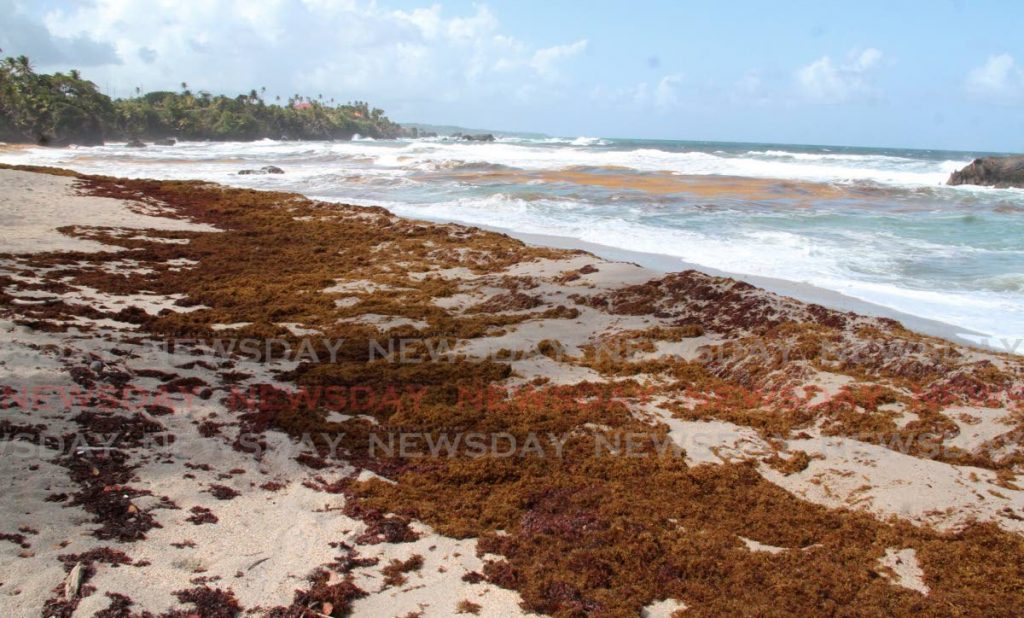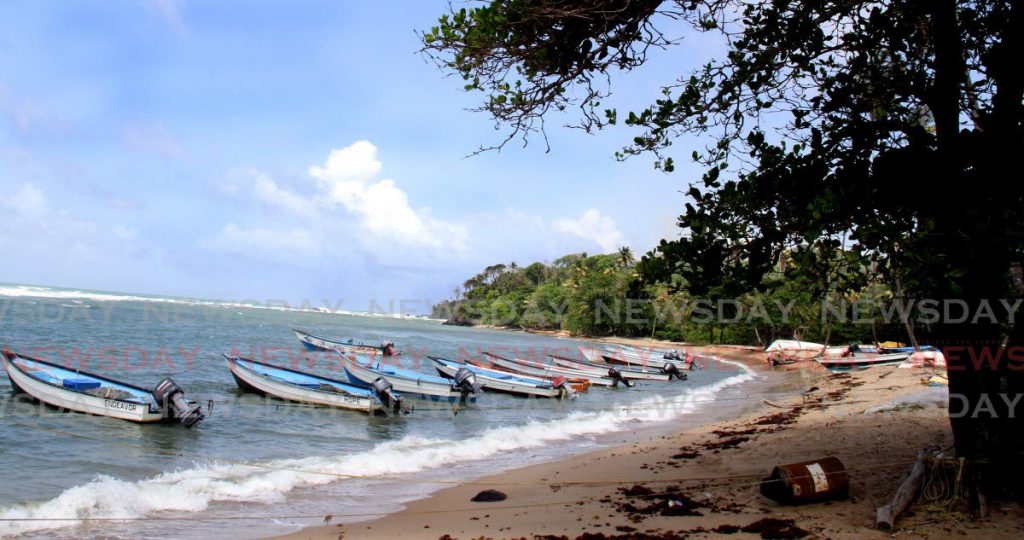Is the Salybia Reef dying?

Dale Joseph, 45, grew up a stone’s throw away from the Toco beach, located in north-east TT.
Although he wasn’t a fisherman himself, his father would do rock fishing to keep Joseph and the rest of the family fed.
Now a vendor with his own beach front variety store, Joseph recalled in his childhood the fishing village of Toco hadn’t a need for anything. The sea would, with each new moon, bring forth a bounty of fish so fishermen would be able to feed themselves and make money.
But these days, the reef is not so bountiful; there's just not the same amount of fish. Joseph believes it is because the reef is dying.
“Back in the '80s and in the early '90s we would go out and stand up on the rocks and hold real fish. We would roast some on the fire just so and eat, and we would carry the rest home. But that was when the reef was alive. Now it is dead.”
Toco's Salybia Reef is one of the country's reefs, others including the more famous Buccoo Reef and the even lesser known Scorpion's ledge located on the shores of Gaspar Grande, off Chaguaramas.
Spanning a distance of about four kilometres the Salybia Reef crowns not only Grand L’anse bay and the Toco Beach but stretches all the way past Galera point and the lighthouse.
Salybia Reef is a finger coral reef that is home to soft corals and hard corals. While in most cases reefs would require calm clear waters for survival, the resilient reef manages to thrive in the choppy waters off Toco.
For scientists it is a wonder to behold with discoveries yet made. For the villagers in and around the reef it was a way of life.
They called it a fish run: the prospect of food, shelter and the sound of the reef attract sardines and smaller fish to the reef; the sardines attract the larger fish like jack fish, all types of grouper, marlin and sail fish.
Harpoons and fishing rods would do trick for the bigger catch while sardines and other smaller fish would be kept as bait to fish for bigger catch deeper in the water.
Fish wasn’t the only bounty from the seas. Joseph said the reef provided a breeding ground for hermit crab, marine algae, sea cucumbers, brittle stars, eels, sea urchins, rays, turtles, lobsters, octopus and conch.
“When I was younger I remember I could stand from the shore and look out to the rocks and it would have a reddish-purple colour, because it was covered in sea moss. And you know that is big business now,” he told Business Day.
In a 2012 paper, professor in the faculty of Science and Technology at the University of the West Indies (UWI) Judith Gobin explained that coral reefs do more than bring fish closer to the shore. They also function as breakwaters which protect harbours, bays and lagoons and limit the effects of erosion.
But the smaller fish have stopped coming, Joseph said, because the reef does not provide the same protection and shelter it used to.
“We don’t have the fish run again. The small fish don’t come in because they have nowhere to hide.”
Now, Joseph says, even fishermen who go out in boats are unsure whether they would be able to catch a reasonable haul of fish if they stay in the water for the entire night.
“Today (last Friday) one fisherman came back with a catfish and a shark only. He was out there from six in the evening to six in the morning,” Joseph said.
He said along with the scarcity of the reef, the water is covered in sargassum seaweed which makes it difficult for net fishers to catch fish and could cause tangles in the nets. The nets can cost up to $25,000.

More evidence of the reef’s demise, Joseph said, washes up on the shoreline every day. Skeletons of dead corals populate the Toco shoreline.
One of the main reasons the reef may have met such a fate could be the very reason villagers depend on the reef. Overfishing has been known to be one of the contributors to the harming of coral reefs.
Net fishers cast their nets to catch fish but as they drag their nets it could also affect corals.
Gobin’s paper highlighted the correlation between overfishing and the degradation of the coastal reefs.
Practices like trawling – which is literally dragging the ocean floor and taking everything with it – destroys coral reefs, sponges, sea turtles and all forms of sea life in one fell swoop.
Even artisanal fishing could alter benthic habitats – the homes of microscopic underwater organisms – which trigger a chain reaction, negatively affecting the corals and by extension, fishes.
Overfishing, in particular of herbivorous fish like parrot fish could also result in the overpopulation of sponges on the ocean floor setting off more chain reactions which could lead to the reef’s demise.
There are ways to protect what is left of the reef. The Coral.org website which focuses on education and advocacy for the protection of coral reefs, indicated that simple changes to practices in fishing and observing the natural beauty of the reefs, could work wonders.
Expanding protected areas and making them marine protected areas like Little Tobago Island, Goat Island, St Giles Islands Man-of-War Bay and Bloody Bay would have a positive effect on the reef, but would cut the main livelihoods of the people in Toco and other coastal areas where the reef grows.
Joseph said it was time that people diversified from fishing and government brings new forms of support for youths in the area as well.
Sustainable fisheries policies, like establishing seasons for fishing areas, or seasonal closures of fishing of particular species could also assist in protecting the reefs while maintaining the livelihoods of the fishermen on the shore.
For now, people like Joseph worry that by the time people realise the value of the Salybia Reef, it would be all gone.
“I know the reef is important for us and for nature and for everyone,” he said. “But the reef is dead now. Because what I know we used to see from the reef, we are no longer seeing.”


Comments
"Is the Salybia Reef dying?"